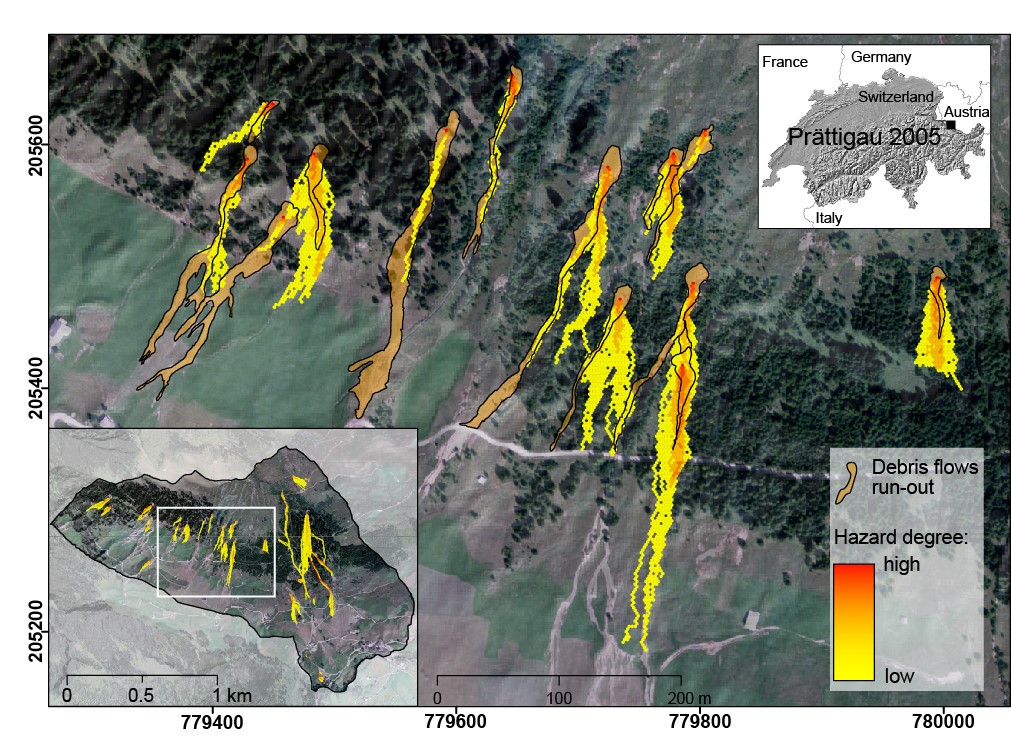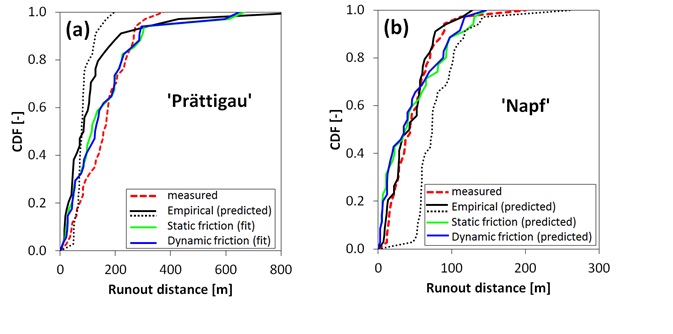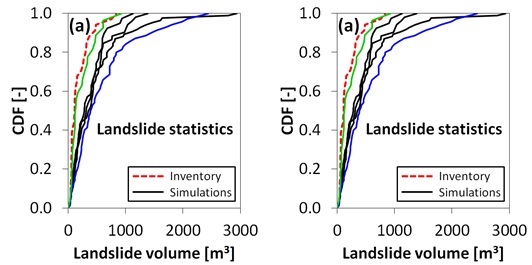Debris flow
Rapid debris flows are among the most destructive natural hazards in steep mountainous terrains. Prediction of their path and impact hinges on knowledge of initiation location, and the size and constitution of the released mass. To better link mass release initiation with debris flow paths and runout lengths, we couple the model STEP-TRAMM with simple estimates of debris flow runout distances and pathways. Landslide locations and volumes provided by the triggering model are used as inputs to simulate debris flow runout distances with empirically-based models. Preliminary results demonstrate the added value of linking shallow landslide triggering models with predictions of debris flow runout pathways for a range of soil states and triggering events, thus providing a more complete hazard assessment picture for debris flow exposure at the catchment scale.
To provide simple estimates of debris flow runout length within the framework of the model STEP-TRAMM, we implement the empirical relationship proposed by Rickenmann (1999) linking landslide volume V, elevation difference H between mass release and deposition and runout length L:
L = 1.9V0.16H0.83

An even simpler empirical model was postulated by Rickenmann (1999) as L=15V1/3 with debris flow length in meters and landslide volume in cubic meters. In the figure below the performance of the empirical models are compared with two simple physically based models for two landslide inventories (for inventories, see http://www.step.ethz.ch/research/active-projects/landslide-triggering/landslide-model/landslide-inventory.html).

By coupling the triggering model with simple empirical relationships between landslide volume and debris flow runout length. It is possible to compare statistics of measured landslides and debris flows with simulated landslides and runout lengths.

To assess the risk (damage) related to a triggered landslide with more sophisticated model approaches, the user-friendly and state of the art model RAMMS (external page http://ramms.slf.ch/ramms/) could be applied.